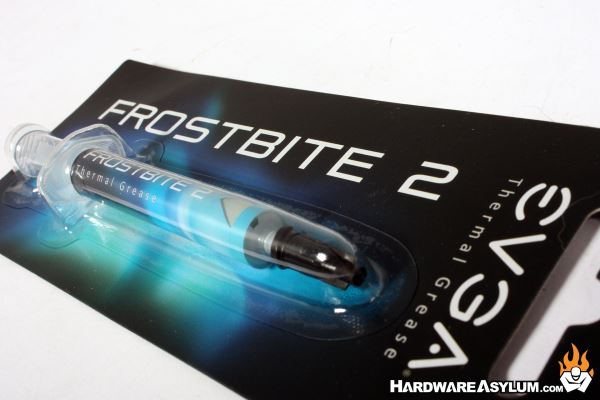EVGA Frostbite 2 Thermal Compound Review
Author: Dennis GarciaIntroduction
When I first started getting into computers there would be pages on pages of discussion related to the pros and cons of individual processors and even more pages related to video cards, motherboards and hard drives. Most of the information was constructive however there were often armchair experts throwing some toxicity into the mix just to keep people on their toes. One of the biggest sub discussions was centered on the topic of Thermal Compound (TIM) including things such as which compound was the best, which was the safest and which you could afford. As you might imagine the discussion was fierce.
From these discussions also started the trends and lore we hold dear. For instance ever wonder why enthusiasts love to bag on how much compound you “should” use? Well, back in the P3 and Athlon XP days the CPUs didn’t have heatspreaders and some of the best compounds you could buy were also electrically conductive. Using too much paste was an easy way to kill a chip. Some of the other compounds were extremely dense and didn’t spread properly so, if you used too much it was bad for thermals. Both types of compound served a purpose and all needed to be used properly to attain the best results.
Of course there are many factors to consider when looking at thermal compounds including the actual fitment of the heatsink to the heat source. Some processors have a dome in the center of the heatspreader while others might be flat. Likewise, there are heatsinks with a dome in the center while others might be flat. Domes are good at getting direct metal contact because it doesn’t matter how badly you install the heatsink there will be a good connection somewhere. Flat surfaces rule when ti comes to thermal transfer and yet are extremely dependent on how the heatsink is installed. More often than not bad thermals are related to a bad mount.

In this review we will be looking at the defacto solution for addressing the thermal concerns in a PC the thermal paste, thermal compound, thermal interface material and/or thermal grease. Whatever you call it the stuff is designed to fill the gap between heat source and heat sink to provide a good thermal transfer.
The EVGA Frostbite 2 is a second generation thermal compound from EVGA designed for CPU and GPU applications including aircooling, watercooling, chilling, gaming and overclocking. For this article I’ll be addressing many of the questions and concerns my readers expressed about the Frostbite 2 and will include some real world testing just to see how well the EVGA Frostbite 2 actually is.

